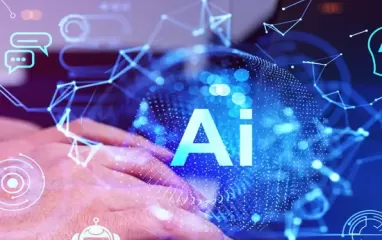Other recent blogs



Let's talk
Reach out, we'd love to hear from you!
IT operations today are dealing with a massive chunk of data. With the increasing complexity of modern IT environments, they face an overwhelming number of alerts, events, and performance metrics. Traditional monitoring tools, which are built for simple use cases, can’t keep up with this dynamic demand. They often lead to alert fatigue, missed critical issues, and a more reactive approach to problem-solving. This is where the concept of AIOps comes into the picture.
For those wondering what is AIOps, it stands for Artificial Intelligence for IT Operations — a technology that uses AI and machine learning to automate and optimize IT management. By applying the power of AI and machine learning, AIOps provides a newer and more competitive approach to problem-solving and transforming the IT operations from a reactive to a proactive approach.
The evolution of IT operations
IT operations have undergone a significant transformation driven by the increasing complexity of modern technology. Earlier, IT departments used to rely on manual processes to manage infrastructure. However, with the exponential growth of devices and data, these traditional methods are ineffective.
The introduction of big data analytics was a major breakthrough that could identify the needs of IT operations and draw insights. This technology could analyze a vast amount of data and produce results for today’s world. However, the need for human intervention was still there. Therefore, the need for a more automated system was still present. This was critical if IT operations were to become automated. This paved the way for AIOps. If you’re exploring what is AIOps, it can be defined as an AI-driven approach that automates IT operations, draws actionable insights, and ensures systems perform optimally with minimal human intervention.
From reactive to proactive: The rise of AIOps
Understanding what is AIOps helps organizations see its potential to change how IT operations are managed across hybrid and on-premise environments. It changes the way work gets done by changing from “fix-as-it-breaks” to a more sound, proactive approach.
The power of AI for IT operations comes from the fact that it can automatically detect anomalies and streamline incident response. Through this approach, the issues could not only be detected faster but also can be predicted before they happen, which could impact service. The emerging influence of generative AI for IT operations promises even more sophisticated incident summarization and automated remediation.
For many Chief Information Officers (CIOs), partnering with an AI development company is a logical step. This collaboration helps integrate AIOps platforms seamlessly into existing workflows, making IT operations simpler, faster, and more adaptable. The ultimate goal is to enhance efficiency and reliability, ensuring that the IT infrastructure can keep pace with business demands. The growth of the AIOps platform market underscores this increasing enterprise reliance.
Core components of a robust AIOps platform
An AIOps platform is not just a single tool but comprises a list of tools working in sync. The importance of this is that it transforms raw data into actionable insights and automates the process. Here’s a list of components that enable AIOps platforms to deliver what they promise.
1. Data ingestion and aggregation:
It involves collecting and normalizing vast amounts of data from several disparate sources. This includes logs, performance metrics, events, and network traces from across both on-premises and cloud environments. The goal is to create a single comprehensive data lake for analysis.
2. Big data storage and processing:
Given the sheer volume and velocity of IT data, AIOps platforms require a highly scalable and performant infrastructure. This component is responsible for efficiently storing and processing petabytes of data in real time. It serves as the backbone for all subsequent analytical and machine learning processes.
3. Machine Learning algorithms:
This is the "AI" in AIOps. A suite of sophisticated ML algorithms is used to analyze the aggregated data. These algorithms are designed for tasks like anomaly detection, pattern recognition, and correlation analysis. They are also crucial for predicting future issues and identifying the root cause of an incident.
3. Machine Learning algorithms:
This is the "AI" in AIOps. A suite of sophisticated ML algorithms is used to analyze the aggregated data. These algorithms are designed for tasks like anomaly detection, pattern recognition, and correlation analysis. They are also crucial for predicting future issues and identifying the root cause of an incident.
4. Automation engine:
The role of automation engine is to track the insights generated by the AI and ML algorithms and convert them into actionable insights. It can automate routine IT tasks. This includes situations like restarting a service, executing self-healing actions, thereby reducing the need for manual intervention significantly. The addition of generative AI for IT operations is starting to revolutionize how these engines compose and execute complex automations..
5.Visualization and reporting:
This part makes complex data understandable to human operators. It also provides customizable dashboards that offer a clear view of IT operations. This is helpful in monitoring performance trends, finding bottlenecks, and having a high-level understanding of the IT environment.
6. Integration capabilities:
If the AIOps platform is to be successful, it should integrate seamlessly with the existing IT environment. This includes connecting to ITSM (IT Service Management) tools, CMDBs (Configuration Management Databases), and other monitoring systems. These integrations ensure that AIOps becomes an integral part of the organization’s current operations scenario.
Key use cases of AIOps
Once you understand what is AIOps and how it functions, it becomes clear that its applications can significantly benefit organizations across various sectors. By automating critical processes it frees up IT teams to focus on more strategic tasks like innovation and planning. Here are some of the key areas where AIOps is making a significant impact:
1. Anomaly detection:
As this is a core function of AI for IT Operations, the platforms use advanced analytics and machine learning algorithms to process massive volumes of data from multiple sources, such as logs and metrics. They can automatically detect irregularities or outliers in real time, which is a major breakthrough in IT operations. This allows the operations team to confront potential issues such as performance degradation and security threats before they escalate into major issues, improving system performance and customer satisfaction.
2. Root cause analysis:
Traditional and existing root cause analysis are time-consuming. AIOps tools automate this process using AI and machine learning. By analyzing correlated data from diverse sources—such as event logs, performance metrics, and network data—AIOps can quickly identify the underlying reason for an IT incident. This capability helps IT teams resolve issues much faster, reducing costs and downtime. It also shifts the focus from reacting to a proactive approach and understanding its recurrence.
3. Predictive analytics:
Predictive analytics is a strong AIOps tool that uses machine learning to detect potential issues within the system. By analyzing historical and real-time data, it identifies trends and patterns that often precede a problem.
This allows IT teams to take proactive steps, such as scaling up resources or preparing with preventive maintenance, before any incident occurs. This paves the way to reducing downtime, faster response times, and overall improved performance management. This leads to a good experience for the end-user.
4. Automation:
Automation is one of the most vital functions of AIOps. It leverages AI and machine learning to take care of routine, repetitive tasks such as creating tickets and resolving simple issues without human intervention. By automating these processes, AIOps frees up IT professionals from the "manual grind," giving them more time to focus on strategic initiatives, complex problem-solving, and innovation. This proactive automation helps organizations maintain system stability and quickly adapt to dynamic IT environments.
Implementing AIOps: Best Practices
Before diving into best practices, you might ask what is AIOps in implementation terms - it’s not just installing a tool but transforming how IT operations function using AI and automation.
Commencing an AIOps journey requires careful planning and strategy to produce a positive return on investment. It looks like it is about installing a tool. But it’s more than that; it is the transformation of operational processes. By following these best practices, there is a high chance of successful implementation.
1. Define objectives:
Before you start working on an technology, you need to define the challenges that you want AIOps to solve. You can start by setting clear, measurable goals for the same. Whether it’s reducing mean-time-to-resolution( MTTR) or cutting down on alert noise, well-defined objectives guide the entire implementation process. By doing this, it ensures that AIOps effort delivers tangible business benefits rather than just technical capabilities.
2. Assess data quality:
The effectiveness and performance of an AI/ML system are dependent on the quality of data it is fed with. In order to be successful, the quality, completeness, and cleanliness of IT operations data is of utmost importance. Ensure you have reliable ingestion pipelines for logs, metrics, and events, and that data is normalized for consistent analysis. If the data quality is poor, it will lead to skewed AI and ML insights.
3. Adopt a phased rollout:
The most imperative step here is to do a pilot for a non-critical domain to manage the risks and complexity of the AIOps initiative. Use this phase to check for any modifications, refine models, and have organization buy-in. Once you start achieving success here, you can expand the scope to other IT domains. Incremental deployment allows teams to learn, adapt, and build confidence before scaling up.
4. Strategically evaluate technology:
There are a variety of AIOps platforms in the market with different capabilities. You need to prudently evaluate potential solutions depending on specific use-cases, integration needs, and budget. You need to focus on platforms that offer flexibility, prime ML features, and the biggest thing is the ability to integrate with your existing monitoring tools. The tool you choose should align with your organization’s data complexity requirements.
5. Champion Organizational Change:
As it is a big organizational change, it’s not just an everyday change but a cultural shift within the IT operations team. Focus on providing training and support to the employees and imparting knowledge about the value of data-driven decision-making and change management. Focus on a mindset where AI and humans provide a positive collaboration and impact rather than replacing humans. Imparting education on change management is crucial for overcoming resistance and increasing employee adoption.
6. Institutionalize continuous improvement:
You should treat AIOps as an ongoing journey and not a one-time project. To measure the platform's impact, key performance indicators(KPIs) must be tracked. Machine learning models must also be refined with new data and feedback, and automated workflows optimized to ensure AIOps processes are strongly aligned with the evolving IT environment. Treating AIOps as a continuous improvement cycle ensures long-term effectiveness.
Examples of AIOps
The true value of AIOps is displayed as it positively impacts operational efficiency and customer satisfaction across various industries. By leveraging AI & ML, organizations can attain reliability and performance previously not easily possible. We will see real-world examples of AIOps showcasing its advantages:
1. Retail:
A global retailer leveraged AIOps not just for infrastructure requirements, but also to optimize the customer journey, experience, and product recommendations on its platform. By regularly analyzing customer behavior, transaction logs, and performance metrics, AIOps makes sure the site is up and running during the peak sales period. This contributes to a higher conversion rate and a more personalized shopping experience, positively impacting the profit.
2. Logistics:
A major logistics company integrated AIOps into its supply chain management system to improve operational visibility. The platform processes data from fleet telemetry, warehouse management systems, and also tracking updates to predict delivery delays or bottlenecks. This proactive intelligence allows the company to reroute shipments on time or minimize disruptions and ensure timely delivery to clients.
3. Financial services:
A global bank successfully deployed an AIOps platform to counter the large number of alerts produced by its complex IT infrastructure. The platform significantly reduced incident noise by intelligently correlating alerts, allowing IT teams to focus only on critical events. This accelerated root cause analysis and improved the overall reliability of its high-traffic online banking and trading platforms, ultimately boosting customer satisfaction and transactional security.
4. Healthcare:
A leading healthcare provider implemented AIOps to enhance the monitoring of its vital patient care and electronic health records system. The platform’s ability to detect subtle anomalies is the biggest plus point, as system issues that could impact critical patient monitoring are proactively addressed. This approach minimizes risk, supports clinical decision-making, and contributes to safer patient outcomes.
Conclusion: Embracing the future of IT operations
To summarize, understanding what is AIOps is key to realizing how it is rapidly changing the landscape of IT operations, paving the way for the necessary evolution for managing today’s complex data environments. By integrating advanced tools such as Lille anomaly detection, predictive analytics, and intelligent automation, AIOps transforms data-heavy functionalities into clear, actionable insights.
The shift enables organizations to move beyond reactive to proactive IT processes. The challenges in data quality require careful examination; the benefits pave the way for efficiency.
For CIOs, embracing AIOps is crucial for driving business success, ensuring reliability, and making informed decisions. The AIOps platform provides the necessary advantage to enhance business operations and stay competitive in today’s digital environment. Stay informed, stay proactive, and welcome the intelligent future of IT operations with AIOps.



